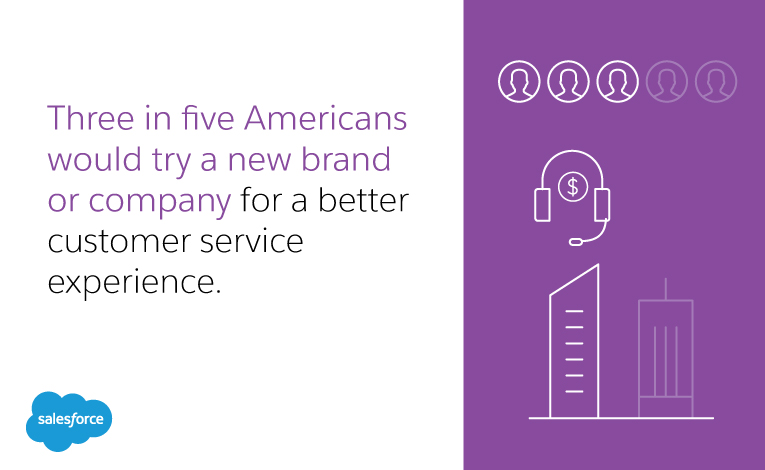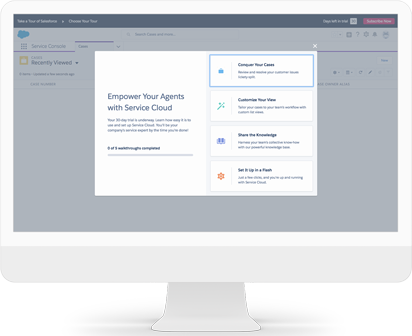customer service system
How a Customer Service System Makes a Difference

For any successful business, good customer service is more than just a luxury. It is an important factor in boosting the bottom line. As of the past year, US companies are now losing an estimated $62 billion every year as a result of poor customer service, more than a 51 percent increase since 2013. If companies across the country want to prevent this number from continuing its upward trend, they need to act now to revamp customer service strategies. Lowering customer churn rate by even just five percent can be enough to increase profitability by 25 to 125 percent.
According to the Salesforce 2016 State of the Connected Customer report, 61 percent of customers say that tech is redefining their behaviour as a customer, and a further 70 percent say that tech has made it easier than ever before to take their business elsewhere. If a business wants to flourish, a customer service strategy that includes a focus on, and full integration with, technology is an absolute minimum.
Fortunately, to tackle these new challenges to customer service, businesses can now take advantage of advanced, cloud based management software that is specific to customer service issues. These are called customer service systems (CSS), and they are crucial tools in improving customer service for those companies who take advantage of them.
What Are the Features Your Business Should Look for in a CSS?
Customer service support software is a competitive industry, and as such there are a lot of different types of customer service systems to choose from. The priority then becomes finding the best customer service system to fit each business perfectly. Naturally, this means that specific CSS demands will be subtly different from business to business, but there are a few universal features from which every business can benefit.
The Best Tools
Some businesses may need certain specialist tools in their customer service system, but most are useful across the board. It is important to have a CSS that is adaptable, with customisation and add-ons that can allow for every aspect of your customer service strategy. Here are a few essential tools:
Case management — in a time where customer service interactions can take place online or offline, the best way to keep on top of everything is through automated case management. This means that everything from customer service email management to social media interactions and even call center interactions can be accessed from one place, and organised into unique case profiles for each customer.
Customer service ticketing system — is essential for organising customer cases and keeping track of interactions to make sure no customer slips through the cracks.
Self service portal — 91 percent of customers have stated that they would use an online knowledge base if it were available and tailored to their needs. This overwhelming majority makes a self service portal a necessity for a CSS.
Analytics — the best customer service systems will also provide analytics for identifying trends and providing greater insight into the customer experience.
Full Integration
With so many different outlets to draw customer service data from, full integration is a must. This should allow for updates and multidirectional information sharing between channels.
Instant Usability
The customer service system should be usable for any employee, right out of the box, with an intuitive user interface, regardless of device used or prior knowledge.
Total Scalability
A customer service system should also be a tool that enables growth through easy, cost effective scalability, and a variety of add-ons. This provides a leg up to small and medium-sized businesses who need to grow without spending too much.
In addition, a customer service system should also be secure. Both company and customer data is important, and losing any can be incredibly costly. Make sure that the CSS provider is employing the most up to date security measures for your data, and regularly updating for emerging security threats.
Salesforce is the Best Option for Improved Customer Support.
One customer service system that has all of these features and more is Salesforce Service Cloud. Service Cloud works with other Salesforce solutions to provide a complete, personalised 1-to-1 journey for each customer. Using these Salesforce solutions, businesses can view customer profiles based off of information pertinent from each avenue.
The automated customer service system collects, categorises, and prioritises cases, while the predictive analytics feature ensures that sales and marketing can reach the right customers on the right channel, so that call center employees can view all necessary information at a glance. Salesforce also makes use of artificial intelligence to learn from your data, and guide you through it in order to make better, more proactive customer service decisions. Since it can also automate tasks for you it increases productivity and facilitates faster case resolution.
All of it works in unison to provide a 360 view of each customer, to make sure that every single one feels understood and no one is lost to competitors. Data has shown that a typical business hears from only four percent of dissatisfied customers, and three in five Americans would try a new brand or company for a better customer service experience. The customer journeys that Salesforce facilitates can guarantee that your customers will not be among them.

Salesforce solutions also allow for greater employee engagement through productivity tools and schedule management, as well as a system that works across every device and requires only a sign in — meaning employees can access customer cases immediately from any location.





